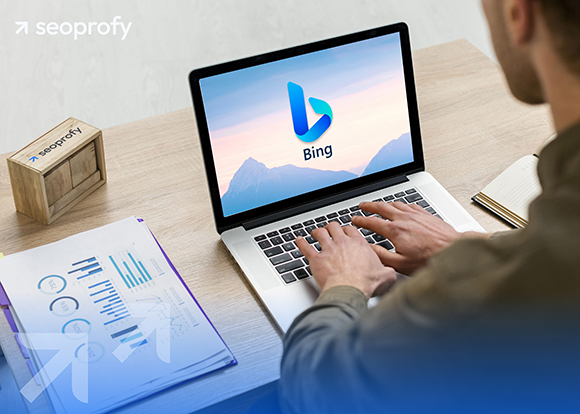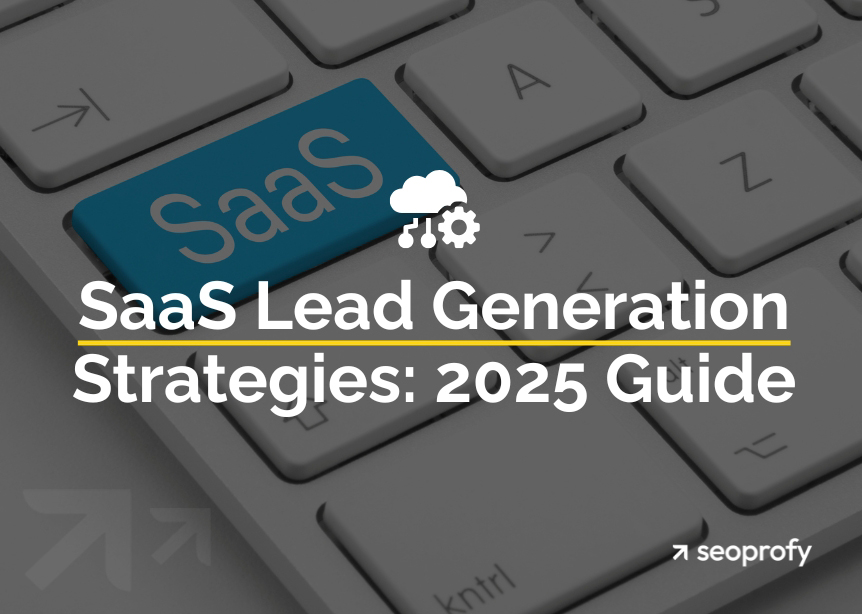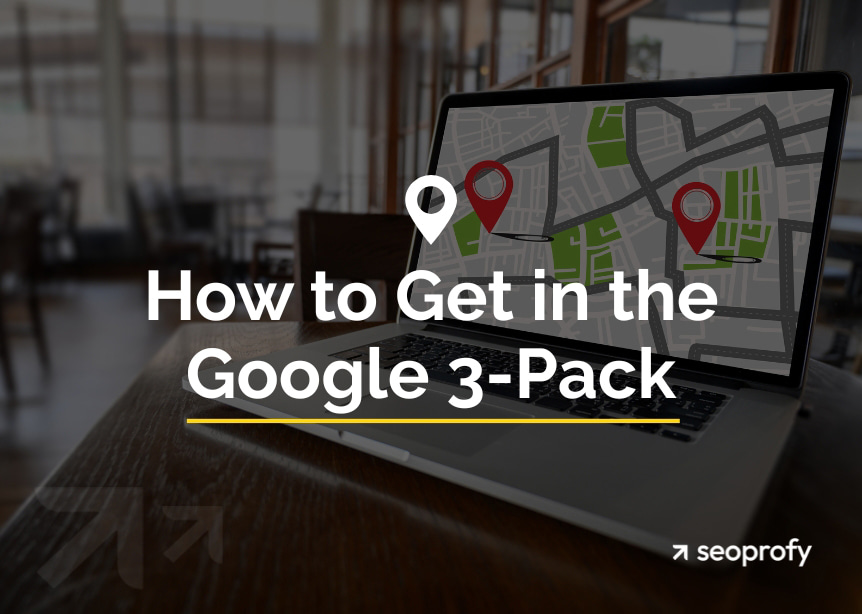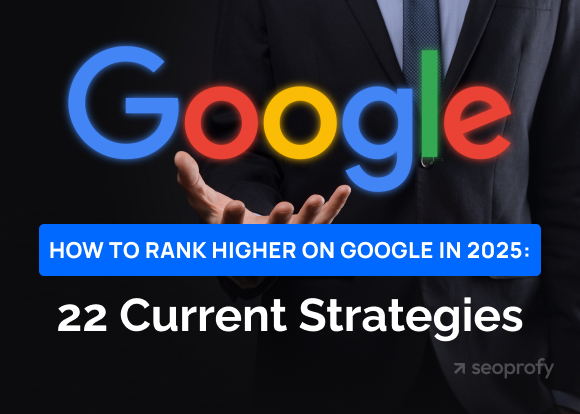Bing has over a billion users worldwide, and a big portion of them are in the United States. It’s also the second-largest search engine in terms of traffic share, which means that a significant chunk of your target audience uses it daily. Yet, many businesses barely think about Bing SEO, leaving a ton of traffic (and revenue) on the table.
The thing that most people don’t realize is that Bing also runs Yahoo Search and Microsoft Edge and even powers AI platforms like ChatGPT. That makes its reach much bigger than you might expect.
In this guide, we’ll share with you everything you need to know about how SEO works in Bing. You’ll learn about the ranking factors of this search engine and get proven tips on how to optimize your website for it to drive more traffic, leads, and sales.
- In contrast to Google, which indexes the mobile version first, Bing still prioritizes desktop sites.
- Social media engagement affects rankings on Bing, so content that gets shared more can rank higher.
- Adding structured data helps Bing understand your content better and improves your chances of showing up in rich search results.
- Local businesses can increase visibility by setting up a Bing Places listing, just like a Google Business Profile.
- Site structure matters for Bing to crawl and index your pages, so keeping it well-organized is the best approach.
Does It Make Sense for Websites to Rank on Bing?
Bing might not be as big as Google, but it still handles millions of searches daily. As of 2025, it holds 12.23% of the global desktop search market. That number jumps to 11.84% on desktops, where many professionals and older users prefer to browse.
Since Bing also powers Yahoo Search, businesses that optimize for this search engine receive additional reach above its immediate market share. Here are some other reasons why it’s important to consider Bing search engine optimization:
- This search engine has lower competition in comparison to Google.
- Many users prefer Bing’s search engine because it’s built into Microsoft Edge and Windows.
- Bing’s search results contain fewer ads, which means better SEO potential for organic listings and clicks.
Moreover, Bing doesn’t stay still. To compete with Google, the platform uses AI models like ChatGPT to make the search results even more useful and personalized for users. We’ll talk more about this in our next section.
Bing’s Share Is Rising Because of ChatGPT
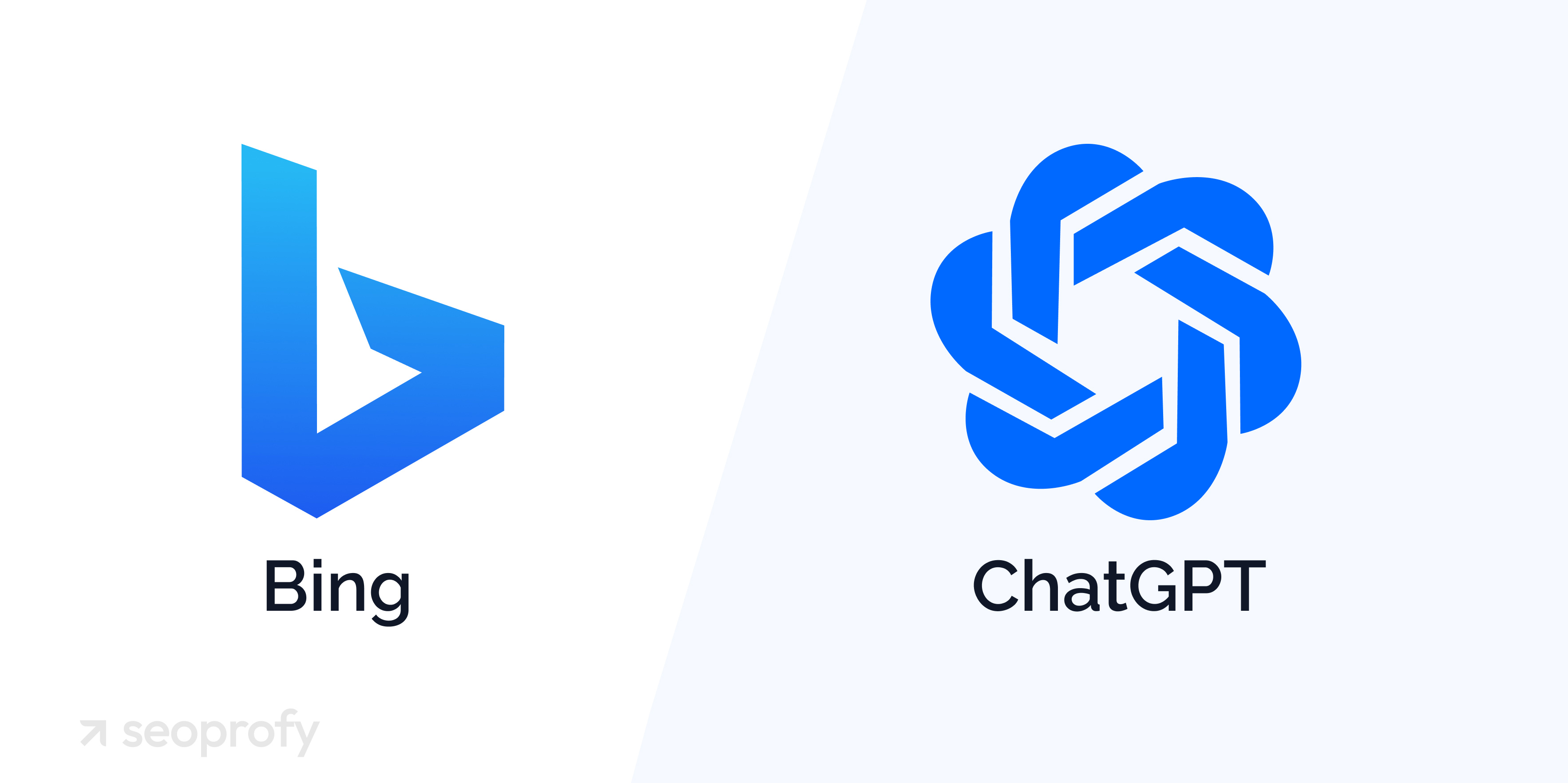
Bing has been getting more attention in the last year, and AI has a lot to do with it. When Microsoft integrated ChatGPT into its search engine, Bing’s mobile app downloads spiked to 750,000 in just one week, as reported by Forbes. It’s clear that people are now curious about AI-powered search and are willing to try something new.
Even though Bing’s market share only increased by 0.17% in the past year since the integration, it’s still a step in the right direction. Growth in the search market doesn’t happen overnight, but even a small shift means more people are making the switch.
It’s safe to say this trend isn’t going to be short-term, either. With AI-driven search continuing to get better, Bing is well-positioned to continue to grow its user base and the amount of traffic it receives.
With all the advantages Bing offers, SeoProfy can help you make the most of it. We’ll design a custom strategy for your business that gets you:
- More visibility in Bing’s search results
- Better website authority with trusted backlinks
- Higher search rankings with high-quality content

Main Bing Ranking Factors
Bing, in contrast to Google, is more open about how it ranks websites. Its guidelines explain what websites should and shouldn’t do to rank well and attract more of Bing’s search traffic. Let’s take a look at these below:
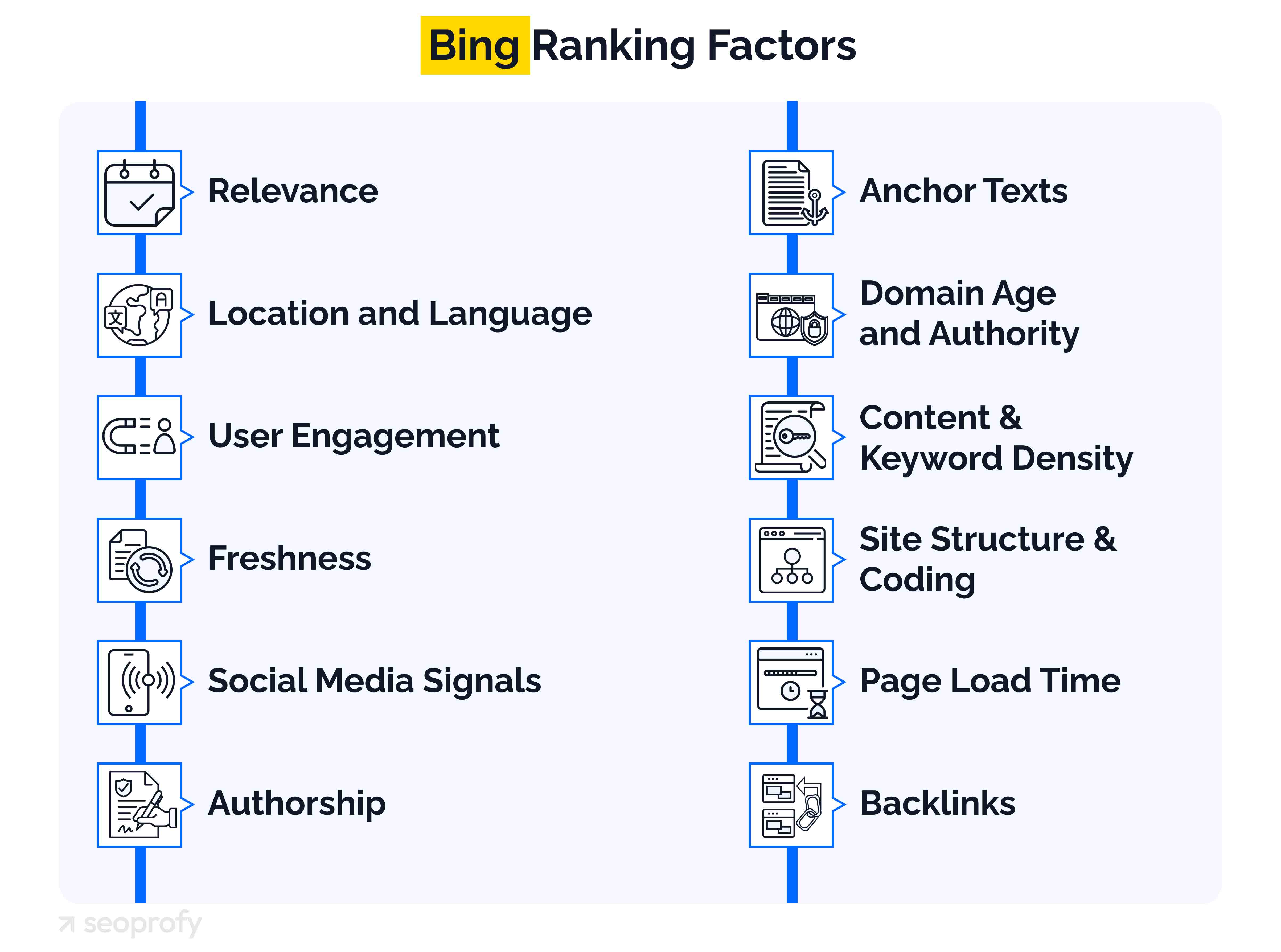
Relevance
According to the Bing Webmaster Guidelines, your content should match what the user is searching for and be relevant to the query. Additionally, it needs to fully satisfy the searcher’s intent so that they don’t have to look for other sources.
Location and Language
Bing looks at where you’re located and also the language settings when deciding which results to show to the users. Websites that are meant for audiences in a specific country should use hreflang tags and local content to match. This helps Bing deliver the right content to the right audience, though this doesn’t automatically improve rankings.
User Engagement
Similar to Google, Microsoft Bing looks at metrics like click-through rates, time spent on a page, and bounce rates. If people stay longer and interact with the site, it’s a sign to Bing that the content is useful.
Freshness
Bing prefers up-to-date content, but it depends on the topic. We all know that some pages stay relevant for years (also known as evergreen content), whereas others lose value quickly. If the information you post about changes often, newer content is more likely to rank well as it’ll better satisfy the user intent.
Social Media Signals
In contrast to Google, Bing factors in social media activity. Pages that get shared and engaged with on platforms like Facebook and X or LinkedIn can gain more visibility in search results.
Authorship
Search engines care about who creates content, and Bing pays attention to this, too. When it’s clear who the author of the content is, it can help establish credibility and show authority.
Backlinks
Backlinks can also influence your ranking on Bing. This search engine prefers organic link building. That’s when other sources naturally link to you over time because they find your content useful. Just like other search engines, Bing prioritizes quality over quantity and considers the relevance of linking sources.
Anchor Texts
Keyword-optimized and descriptive anchor texts are also important for Bing SEO. It helps Bing understand the context of the page but also can strengthen the connection between the linked page and the content, which it recognizes as beneficial for ranking.
Domain Age and Authority
Bing cares about a website’s overall reputation. It looks at how reliable and well-known a site is, not just individual pages. Websites that have been around for a long time and consistently publish useful, trustworthy content tend to rank higher.
Content & Keyword Density
Content on your page needs to answer the search intent to rank on Bing. So, choosing keywords for SEO is super important. You want to choose relevant keywords that match the search intent and use them in a way that feels natural. Still, you need to remember that stuffing a page with the same words over and over won’t do any good.
Site Structure & Coding
Bing recommends using a broad to specific site structure, so that important pages are easy to reach, ideally within three clicks from the homepage. This helps Bingbots crawl and index your site faster. As for the coding, reducing any extra elements also helps with loading speed and is good for technical optimization.
Page Load Time
The final ranking factor on Bing is how fast your site works. It matters because fast-loading websites provide a better user experience and, as a result, visitors engage with the content more and stay on the site longer.
It’s worth mentioning that these ranking factors are always changing as Bing improves its algorithms. So, as a website owner, you’ll need to follow the latest updates and modify your Bing SEO campaigns accordingly. The best resources you can use for this are Bing’s Webmaster Guidelines and the Bing Search Quality Blog.
Bing and Google SEO: Main Differences and Similarities
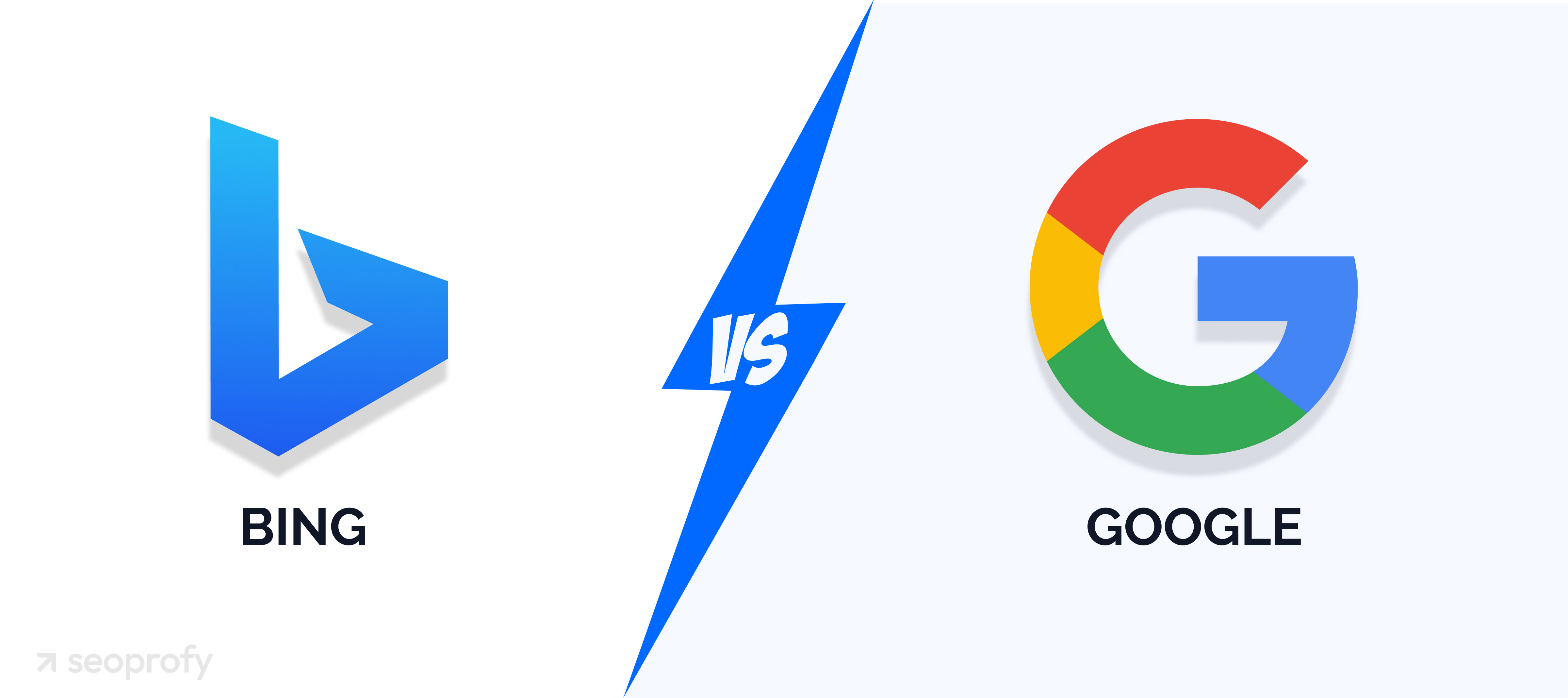
When ranking web pages, Bing weighs certain factors that are similar to Google. At the same time, it also looks at some unique metrics that are only specific to Bing SEO.
Similarities
Bing and Google rank pages differently, yet there are certain similarities. A few of the most important include:
- Content: Pages with useful and high-quality information matter for both Bing and Google. They look at the readability of your content, how well a page answers a query, and if it provides value for users.
- Technical SEO: Both search engines like websites that are fast, easy to use, and well-structured. They suggest image optimization, paring down unnecessary code, and using a minimalistic design for speed.
- User interaction: Google and Bing track how people interact with search results. They check the click-through rate (CTR) and how long visitors stay or leave your site to see if a page is relevant to users.
- Voice search: Both search engines offer voice-activated search, although they use different technologies. Google integrates voice search with Google Assistant, while Bing powers Microsoft’s AI-based platforms.
Differences
Now that you understand the similarities between these two search engines, let’s move on to what makes them distinct from each other:
Indexing Priorities
Google uses mobile-first indexing, which means it looks at the mobile version of a site first for ranking. Bing, however, still indexes desktop pages first, though it does consider mobile usability. So, if a site works well on a desktop but is not fully optimized for mobile, it may perform better on Bing than on Google.
Keywords and Search Intent
Google understands synonyms and search intent and can match the results even when the exact words aren’t used. In contrast, Bing relies more on exact-match keywords, so pages that use the same phrasing as the search query often rank higher. It’s a good idea to remember this when doing keyword research for your SEO strategy.
Backlinks
Both search engines factor in quality links but in different ways. Google prioritizes a diverse mix of links from relevant and reputable sources, whereas Bing gives more weight to older domains and links from authoritative sites like .gov and .edu. However, Google places more emphasis on backlinks overall compared to Bing.
SERPs
Google and Bing search results might look similar at first sight but they are also different. To show you how they compare, here’s what the SERP looks like for the query “What’s the chocolate truffle” on Google.
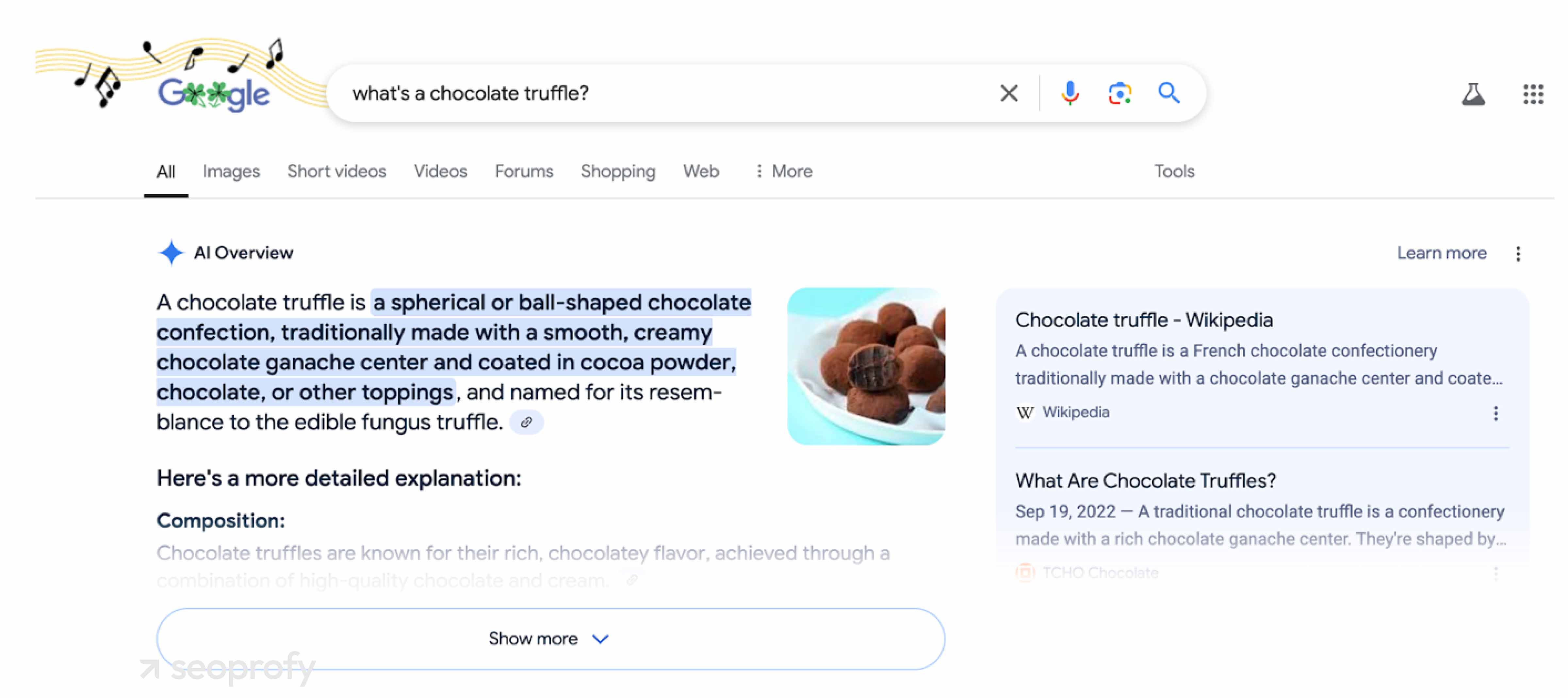
If you scroll down, you’ll also find:
- A Wikipedia knowledge panel
- A list of traditional blue links
- PAA (People Also Ask) section
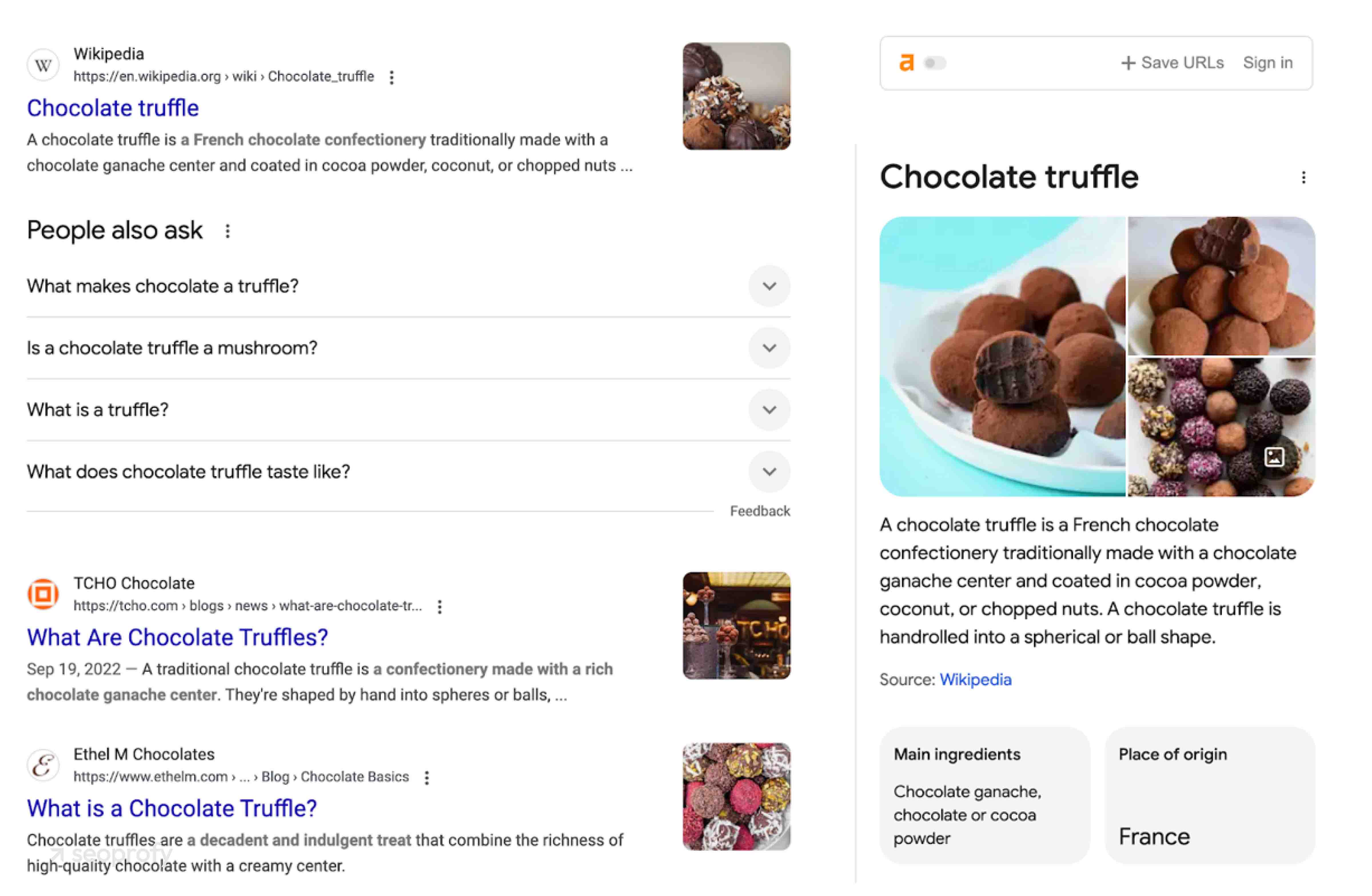
Now, if we head over to Bing and type in the same query, the results will differ. We can see more images that fill the entire first page.
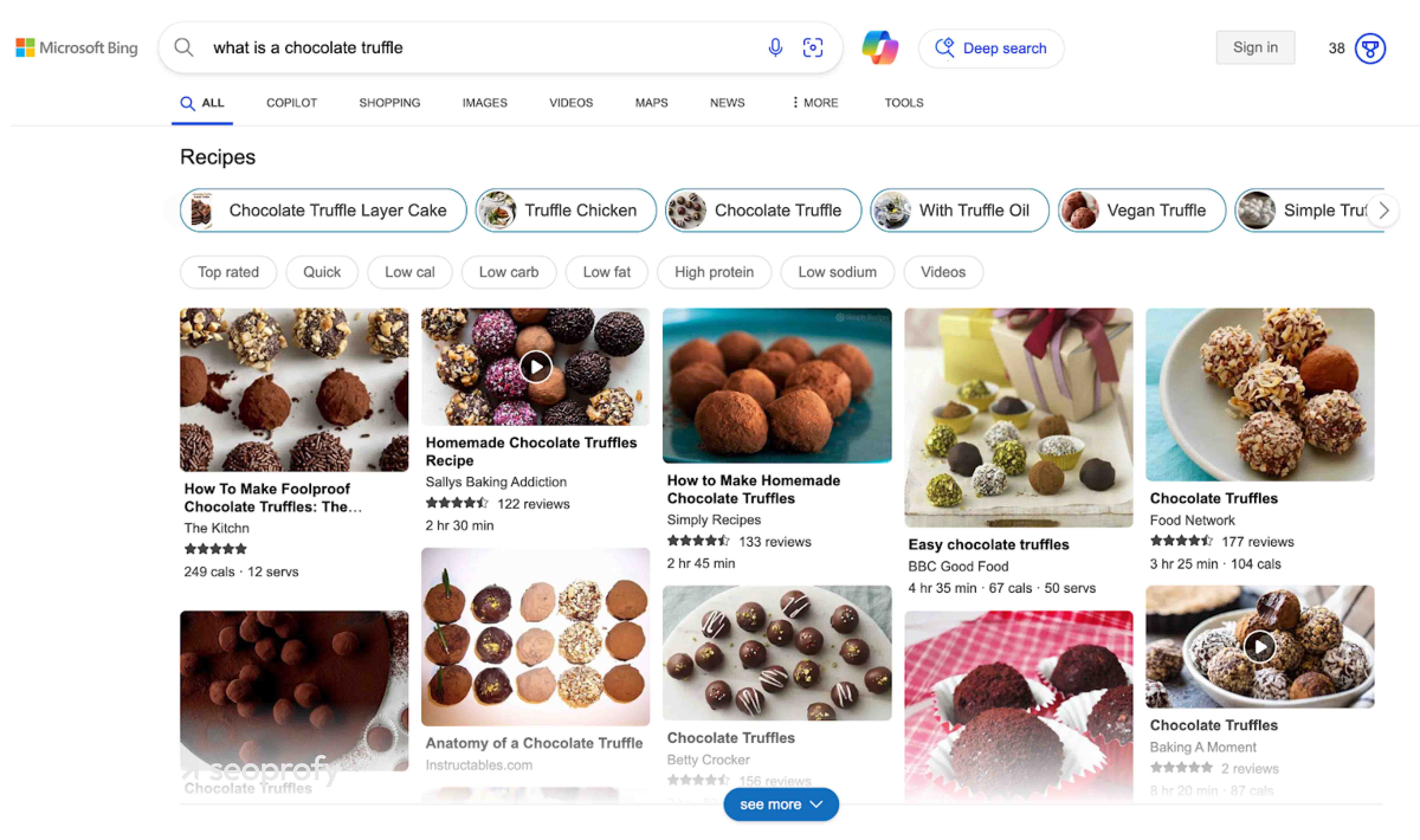
If we scroll, there’s also a:
- A Copilot Answer with images
- A Wikipedia knowledge panel
- Rich search cards that pull data from various sources
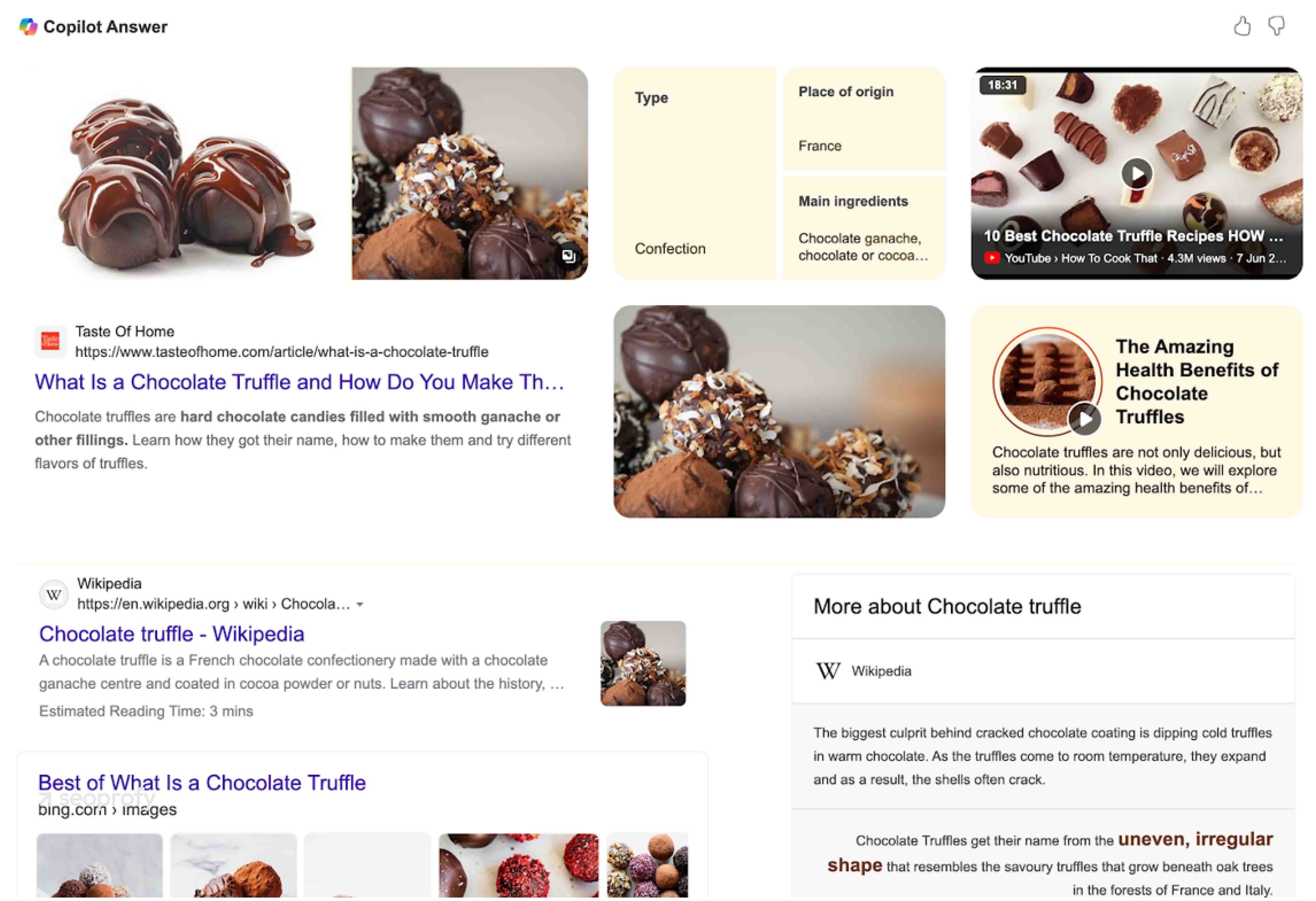
Tools and Indexing
Both Bing and Google offer tools for websites to help website owners monitor performance, troubleshoot issues and achieve ranking improvement. But, the way they handle indexing and site management differs.
Google Search Console mainly relies on automated crawling to identify and add new pages to search results. Manual URL submission is an option but is limited to 10 a day. Bing Webmaster Tools has similar tracking but offers site owners greater control over indexing. They allow webmasters to submit up to 10,000 URLs per day.
Website Security and HTTPS
Bing recognizes HTTPS as a sign of a secure and trustworthy site, but it doesn’t treat it as a major ranking factor. Security is encouraged, but it’s not a strict requirement for visibility in search results.
In contrast, Google prioritizes HTTPS in rankings and gives secure websites an advantage. It pushes for HTTPS because it protects user data, prevents tampering, and also creates a safer browsing experience.
With all these similarities and differences, how can you optimize your site to rank in both? Below, we’ve created a table for you with all the main points to achieve higher positions in Bing and Google:
|
|
Bing |
| Optimize for mobile-first indexing. Google ranks mobile-friendly sites higher. | Structure your site logically from broad pages to more specific ones. Bing prefers well-organized websites with a logical hierarchy. |
| Use structured data. Schema markup increases the chances of appearing in AI Overviews and rich snippets. | Format content for easy reading. Bing favors clear headings, bullet points, and direct answers. |
| Earn diverse, high-quality backlinks. Google prioritizes link relevance and natural growth. | Get links from trusted sites. Bing values backlinks from .edu, .gov, and other authoritative sources. |
| Improve Core Web Vitals. Fast load times and stable visuals help rankings. | Create engaging content to avoid pogo-sticking (users clicking back to search quickly), which is a negative signal. |
| Write for search intent. Google understands synonyms and variations, so avoid keyword stuffing. | Use exact-match keywords. Bing relies more on direct keyword placement. |
| Use internal links. Help Google crawl and rank pages efficiently. | Make use of connecting pages to show authorship. |
| Secure your site with HTTPS. Google ranks secure sites higher. | Promote on social media. Bing uses social engagement as a ranking factor. |
7 Bing SEO Tips
Bing is more transparent about how it ranks websites, which means you can take specific steps to improve your visibility. We’ll share all of these SEO best practices below:
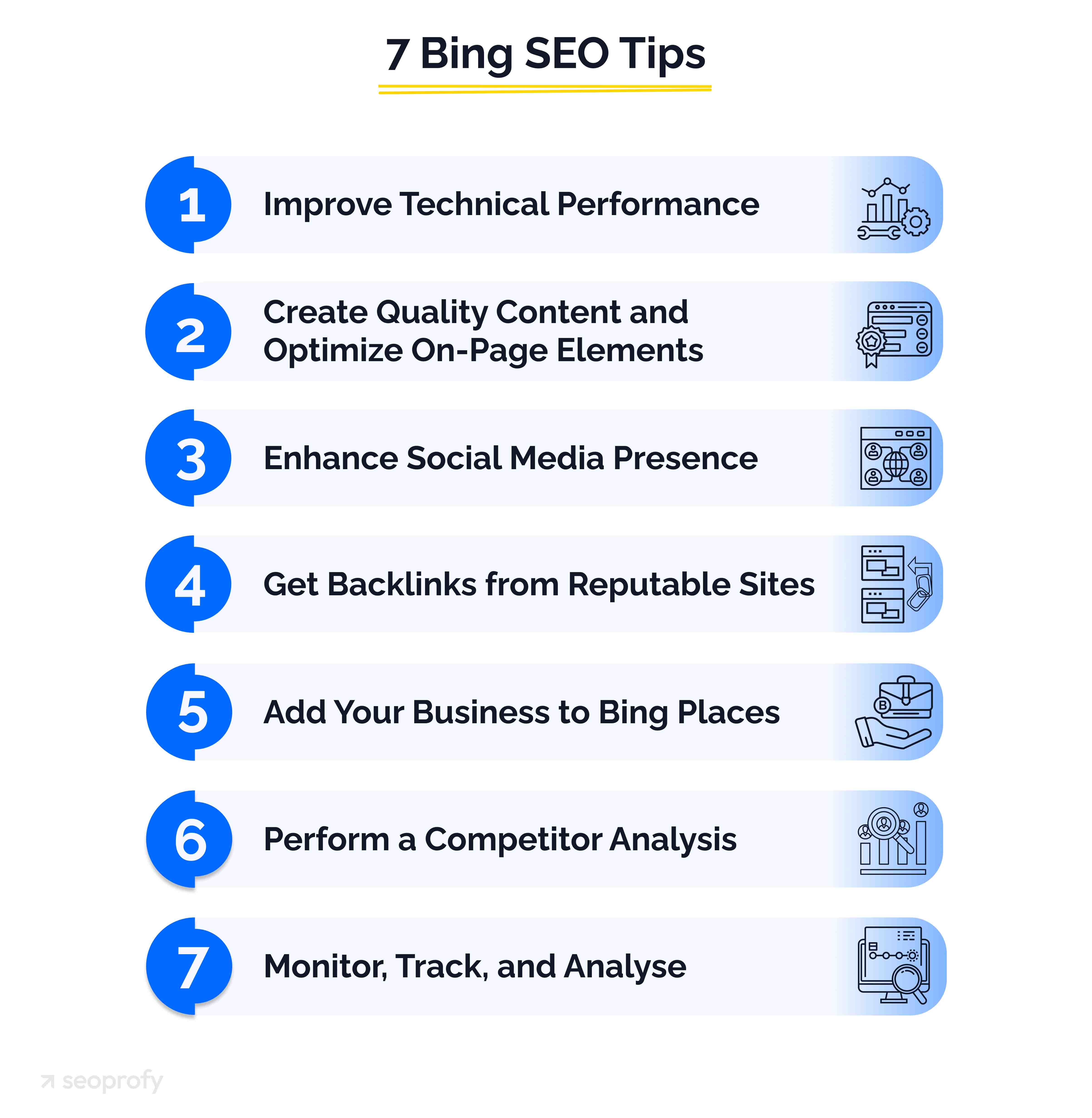
Improve Technical Performance
As we mentioned earlier, site structure is important for Bing SEO. It allows users (and bots) to navigate easily between your pages. So, try to keep your site hierarchy well-organized, with important pages no more than three clicks away from the homepage.
Additionally, submit your XML sitemap through Bing Webmaster Tools or link it in your robots.txt file. This file tells Bing’s bot which pages to crawl and which to ignore. If you have pages that shouldn’t appear in search (such as internal admin pages or duplicate content), set proper noindex and nofollow directives.
Since Bing considers fast-loading pages more user-friendly, it’s also a good idea to keep checking your site’s health. Make sure to reduce large image sizes, remove unnecessary scripts, and use a content delivery network (CDN) to improve load times.
Create Quality Content and Optimize On-Page Elements
An integral part of SEO for Bing is content. It needs to be relevant, up-to-date, and fully answer what people are searching for. How original your information is matters, too. Bing won’t rank scraped or lightly reworded text, so everything on your site should be unique. If you reference material from another source, cite it with a canonical tag.
To help your pages stand out in rich search results, it’s also helpful to add structured data. Bing supports Schema.org, JSON-LD, RDFa, and Open Graph, and you can use any of these formats to provide extra details about your page.
Although the schema doesn’t change how your site looks to visitors, it helps Bing understand the context of your pages and display rich search results like the one below:
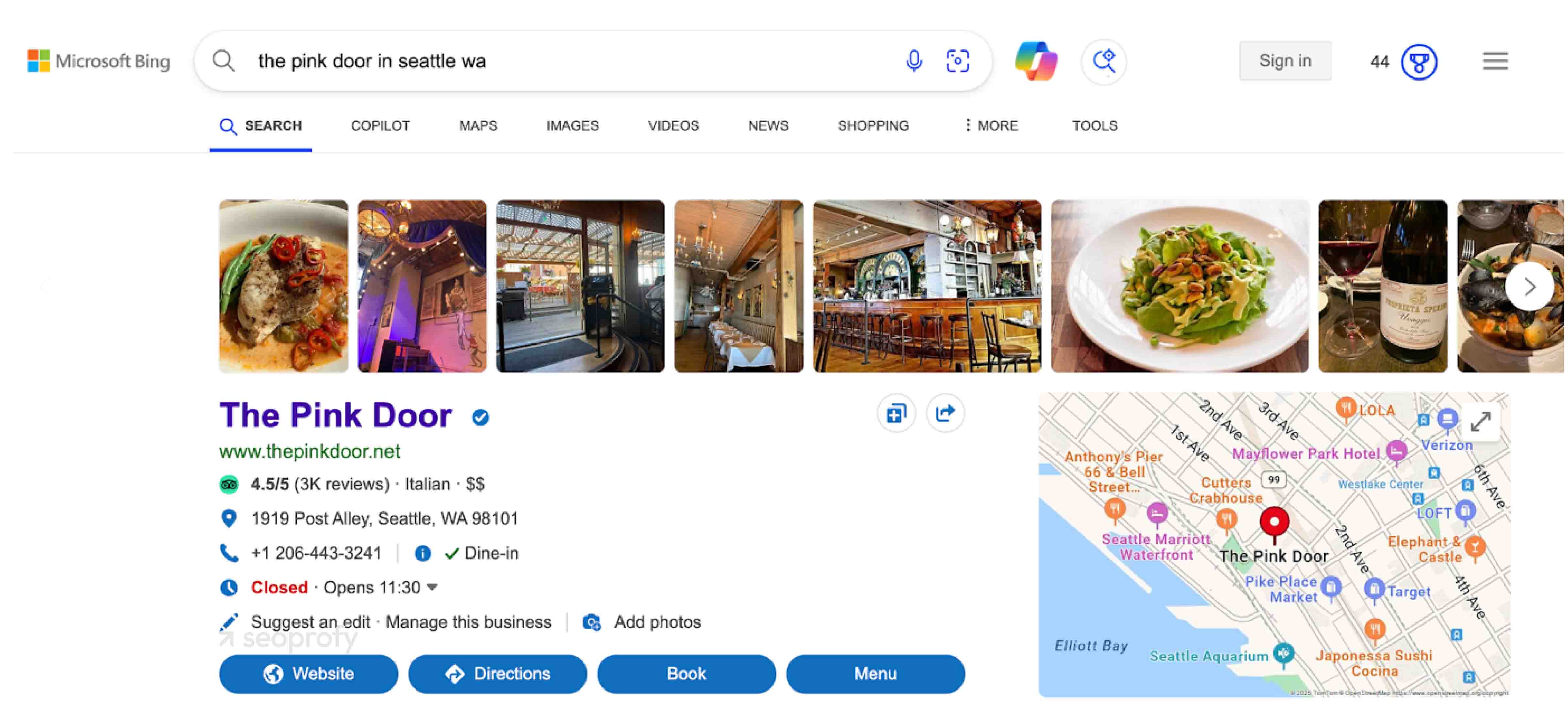
It’s especially useful for local SEO and gives users more information like ratings, images, business info, and even a map to help them make a decision.
As for on-page optimization, Bing places emphasis on exact-match keywords, although it’s not as important now as it used to be. Still, it’s best to naturally include them in titles, headings, and meta descriptions. You can use AI SEO tools to speed up this process.
Other tips are to use clear headings, write descriptive URLs, and break up text into short, easy-to-read sections.
Enhance Social Media Presence
Bing looks at your social media activity when ranking pages. If your article gets a lot of shares, likes, or comments, it signals that people find it useful. This can help improve your position in organic search results.
Take the article “The 17 Most Important SEO Tips for Higher Rankings” from Backlinko. It has been shared 10,032 times across different platforms and ranks in the top 3.
To promote your content, share it on Facebook, LinkedIn, and Twitter. For even more reach, you could join discussions, reply to comments, and add social sharing buttons to your pages.
Get Backlinks from Reputable Sites
Backlinks show Bing that your website is popular. Although it’s not as important for Bing SEO as it is for Google, they still can influence your rankings.
As we mentioned before, Bing values backlinks from .edu sites and older domains. It’s not always easy to get mentions from these, but you can try to partner with universities, contribute to government resources, or earn mentions from long-established websites. Some other ways to get links from other sites naturally are the following:
- Create content worth linking to, like original research
- Pitch guest posts to industry blogs in your niche
- Get your business listed in reputable directories
Finally, create linkable assets like infographics or checklists as part of your SEO content creation strategy. These often get shared around and can easily earn you a mention.
Add Your Business to Bing Places
Bing Places helps businesses show up in local search results, much like Google Business Profile. The entire process of setting it up takes less time than GBP, as you won’t need to add as many details. You can claim your listing directly in Bing Places.
You’ll then be prompted to add your details, such as your address, number, website, and business hours. Once you’ve done that, you’ll need to verify your profile and wait a few days for approval.
Perform a Competitor Analysis
If you want to see measurable results from Bing SEO, it helps to take notes from those who are already at the top. Check out their backlinks, content formats, and ranking patterns, and use this data when building your SEO strategy.
Make a note of the sites that consistently rank for your target keywords and notice how they structure their pages and what kind of headings they use. They are likely following Bing’s preferred methods.
On-page SEO matters just as much. Look at how they write titles and meta descriptions, and organize content, and then test a similar format on your own site and see what kind of results you get.
At the end of the day, your competitors’ data is one of your best resources. So, be sure to make use of it.
Monitor, Track, and Analyse
SEO isn’t something you do only once. Bing changes its algorithm, competitors are always making moves, and user behavior shifts over time. If you want to keep your site visible, you’ve got to check in regularly and adjust as needed.
A good place to start? Bing Webmaster Tools. Take a look at your search performance, index status, and crawl errors. If your Bing rankings dip, find out why. Maybe the page loads too slowly, the content is outdated, or a few important links are broken. We’ll talk even more about these tools in the next section.
Another metric to regularly analyze is user engagement. Bing rewards content that keeps visitors engaged. In case users aren’t spending much time on a page, it could mean the content isn’t as helpful as it should be.
Best Tools For Bing SEO
Bing offers website owners a set of free SEO tools to help them optimize their sites and also understand how their content performs in search. Below, we’ll review each of them and also show you how exactly they can be used.
Bing Webmaster Tools
If you haven’t set up Bing Webmaster Tools yet, now’s the time. It’s similar to Google Search Console but comes with its own distinct features. After you verify your site, you’ll get access to all the reports within the tool.
In the Search Performance tab, you can see your site’s performance, the amount of clicks and engagement your content gets, and also how well your pages are being indexed.
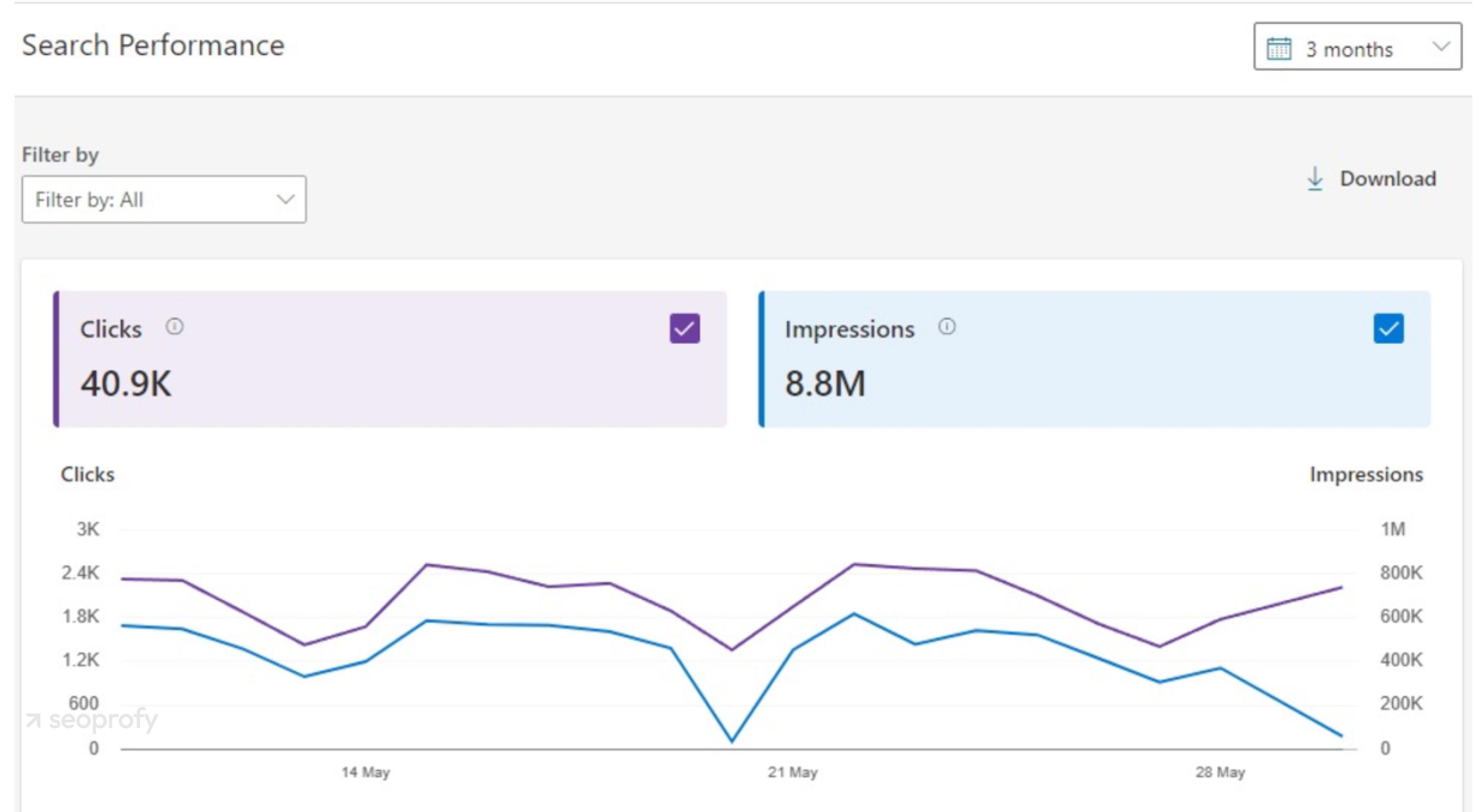
Bing Webmaster Tools also make it easy to check your backlinks. In their Backlink report, you can see which sites are linking to you, what pages they’re linking from, and what anchor text they’re using. Overall, it helps you understand your backlink profile, which is important for Bing SEO.

Another helpful feature in Bing Webmaster Tools is the Site Scanner. It helps you identify technical issues on your website.
To use it, you’ll need to log into Bing Webmaster Tools and start a new scan. You can choose to scan your whole website, a specific sitemap, or just a list of URLs. Once the scan is complete, you’ll get a report showing any errors, warnings, or notices that you’ll need to address.
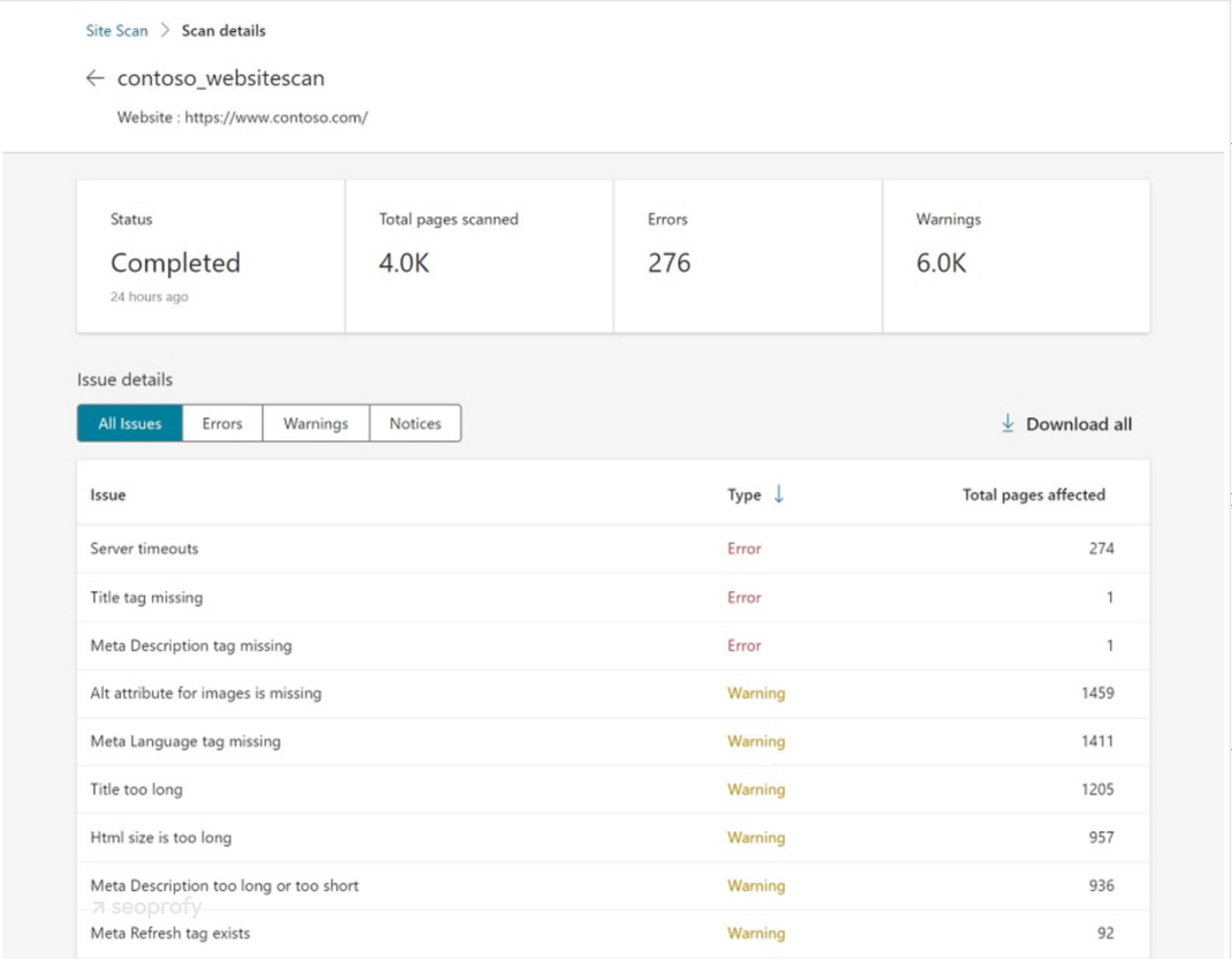
Of course, there are plenty of other features that Bing Webmaster Tools provides, like keyword planner, crawl control, and SEO reports, to name a few. We recommend checking them out as you optimize your site for better performance on Bing.
Microsoft SEO Toolkit
For those who prefer a desktop solution, the Microsoft SEO Toolkit is worth a look. It helps you analyze your site and manage how search engines crawl it. You can use it to find any broken links, edit your metadata, and make sure the right pages are getting indexed.
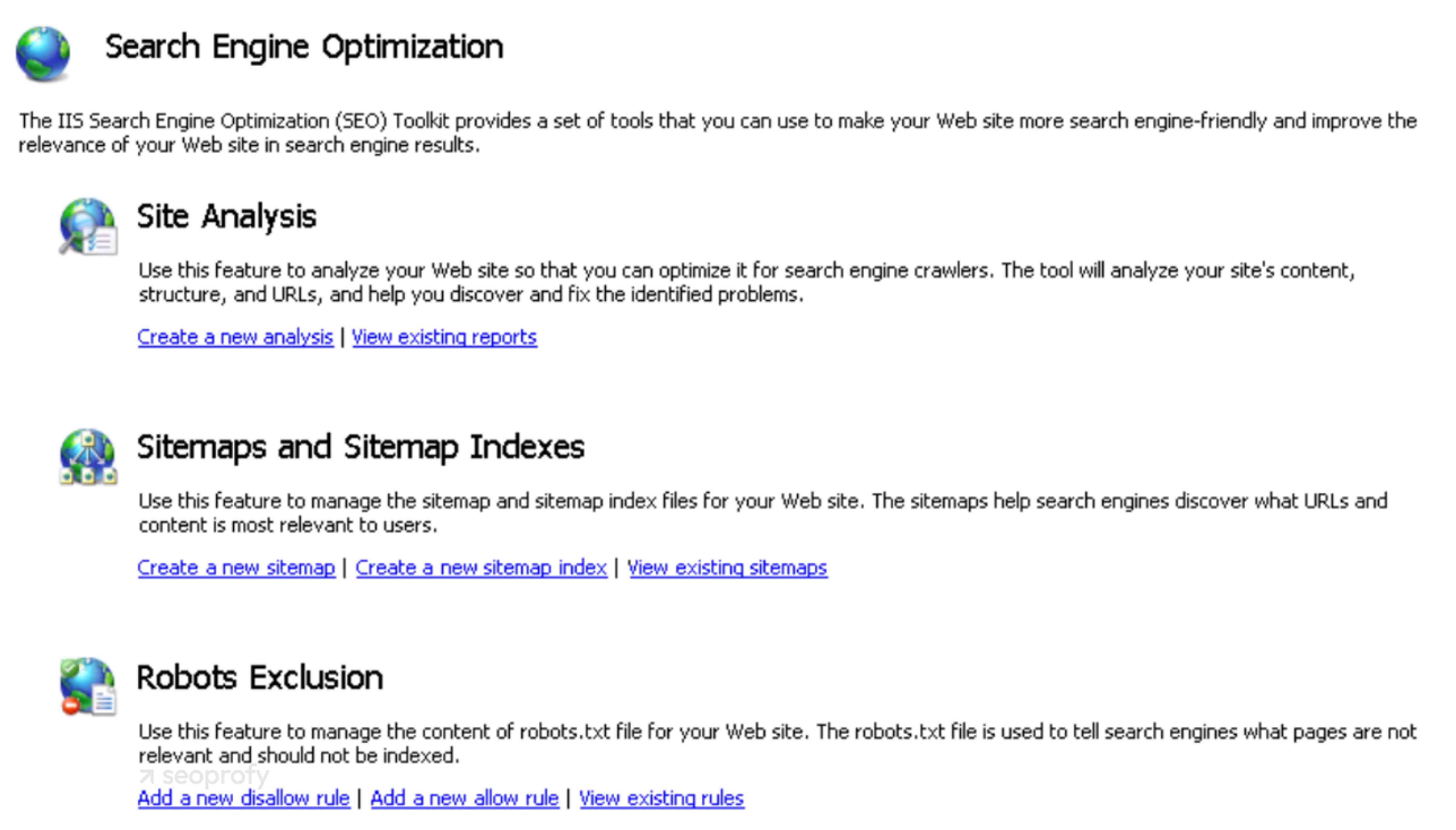
Microsoft Clarity
Last on our list is Microsoft Clarity. With this tool, you can understand how people use your website through session recordings and heatmaps. The best part is that it’s free to use and easy to set up.
You can use it to fix issues that might be confusing to visitors and make your site more user-friendly. It also pairs well with Bing Webmaster Tools.
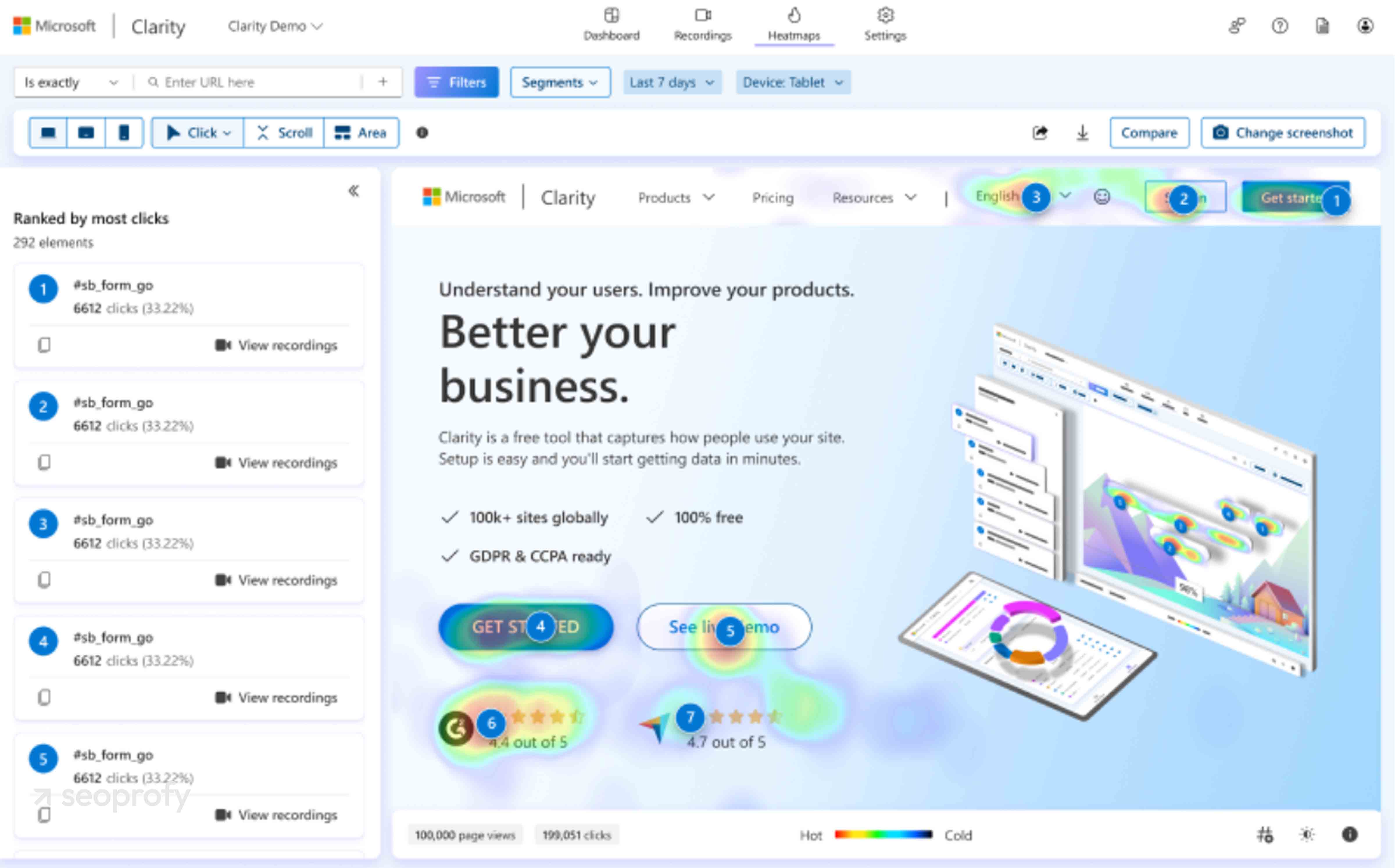
Bing Penalties
Just like Google, Bing has a set of penalties in place. Their web spam filter helps keep low-quality or manipulative content out of their search results. That said, if you post machine-generated or thin content, you might end up getting penalized.
Other tactics that Bing suggests to stay away from are paid links or participation in any link schemes. These are seen as ways to cheat the system, so it’s better not to use them in your optimization strategies.
Check if Your Site Has Been Penalized
If you suspect your site has got a penalty, you can easily check it in the Bing Webmasters Tools. Simply navigate to the Summary Tool and check the Site Status section. In case it says Blocked, you’ll know your site is penalized.
Alternatively, check the Index Summary chart on the Dashboard tab. A drop in the number of indexed pages might also be a sign of a penalty.
Overall, it’s a good idea to regularly review your site to make sure it meets Bing SEO guidelines. This way, you’ll have peace of mind that there won’t be any unpredicted setbacks.
Summary
As we can see from our guide to Bing SEO, the popularity of this search engine is growing, and now you’re more than equipped to start optimizing for it. You might have noticed that there’s some overlap between Google and Bing’s ranking systems. So, if your site’s optimized for Google, you’ll see that it’s also easy to achieve the same success on Bing.
All you need to do is publish high-quality content, build your link profile organically, and follow their guidelines. If, at any step of your journey towards better rankings, you need help, reach out to our SEO agency.
We’ve been working with businesses for the past 12 years and have helped them see more clients from both Bing and Google. Schedule a free consultation today, and we’ll talk about how we can help you grow your organic traffic and sales.

